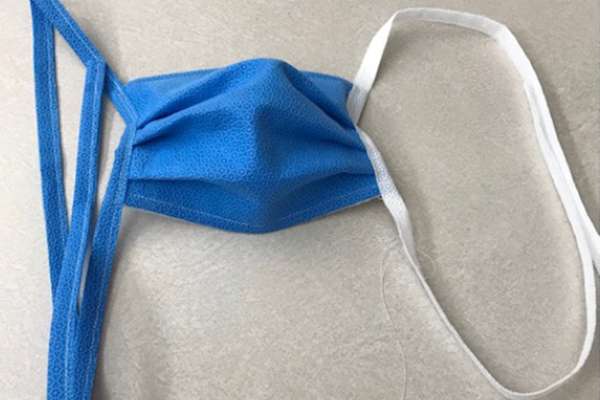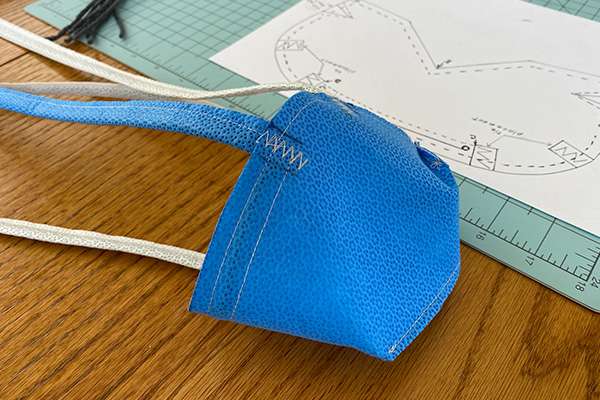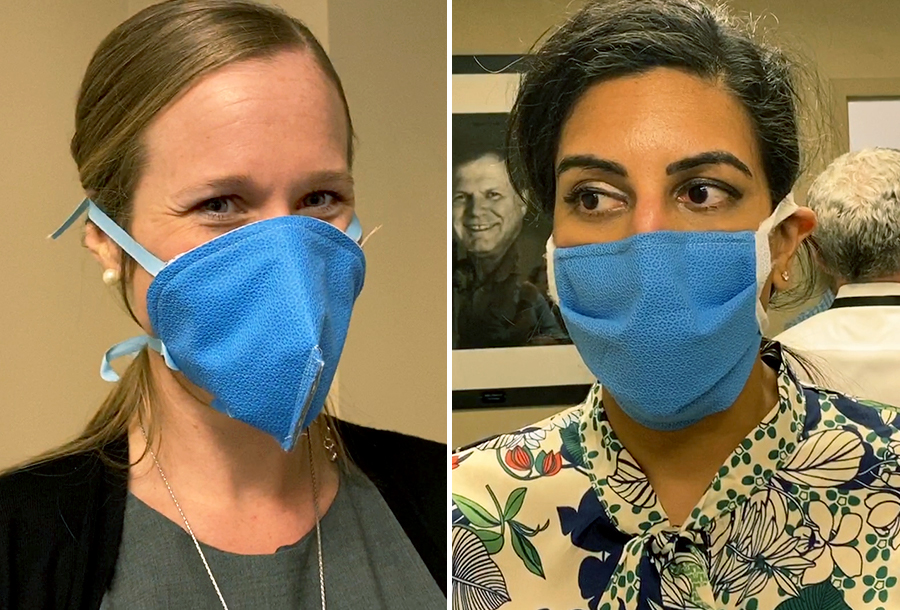How to make a mask
UF Pioneers a Better Homemade Mask
DESIGNED BY: GEORGETTA GRAHAM AND SONIA D. MEHTA, MD, UNIVERSITY OF FLORIDA
This mask consists of two layers of HALYARD H600 medical fabric. The blue side is the right side and will face out. The mask has passed the Respirator Fit Test. Please note that the masks will be sterilized after they are returned to the hospital.
MUST DOS (per UF website)
- Demarcate each mask with an ID tag that does not pierce the material.
- No writing on the material secondary to the degradation of material.
- Do not use pieces of fabric that are ripped.
Minimize the use of pins: Better alternatives are paper clips/sewing clip. - Our masks use Halyard H600 medical-grade fabric but Cardinal wrap can be used as well.
UF Prototype #1
Get step by step instructions on how to sew the UF masks.
UF Prototype #1
This prototype involves a three-pleat design that hugs the face from below the eyes to below the chin.

UF Prototype #2
This prototype involves a cone shape around the nose and the mouth. A wire is inserted so the mask will fit snugly on the nose. It has darts to snug the mask under the chin. There is no binding on this mask.

Cloth Mask Tutorial
(via The Deaconess)
There is published research that indicates that cloth masks are nowhere near as effective in filtering viruses as compared to real surgical masks, or the N95 masks that are most used and recommended in health care settings. However, they do catch droplets and are better than no covering for the nose and mouth, particularly for those who are ill and are coughing, talking, touching their faces, thus spreading the disease.
